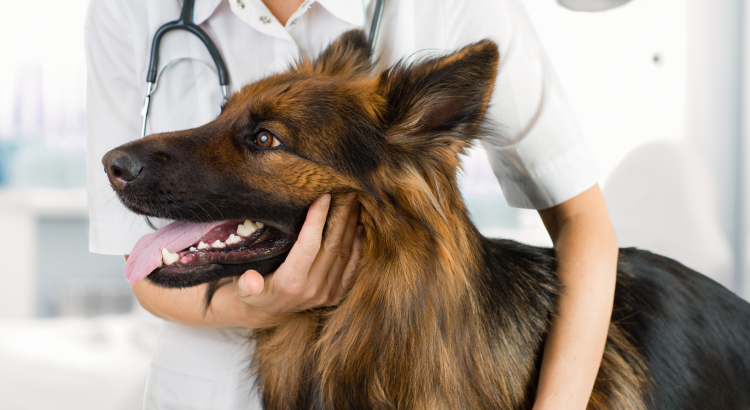FROM OUR PARTNERS

Pet insurance is one of the fastest-growing products in the United States.
This is because the cost of pet care is always on the rise thanks to advancing medical technology and veterinary care costs in general. It’s also because every six seconds, a pet owner ends up with an emergency bill of about $1,000 or more.
As a result, pet owners are choosing to invest in quality insurance plans to ensure that their furry friends are able to get the care they need on the good days and the bad—regardless of the cost.
Of course, pet insurance is still a fairly new concept for most people. In this article, we’re going to break it down for you so you can decide if it’s right for you and your four-legged companion.
You would think that pet insurance would be similar to regular health insurance. However, it functions a lot more like car insurance or property insurance in that it’s there to prevent your finances from turning upside down in the event that something unexpected happens.
Car insurance doesn’t apply to routine maintenance like an oil change or any fender benders that happened prior to purchasing the policy. The same is true for pet insurance. The plans don’t typically cover routine vet care costs or pre-existing conditions.
The point of the policy is to bring you peace of mind in the event of an accident or unexpected illness.
» MORE: Find the best pet insurance for you
Pet insurance is a policy that comes with a monthly premium. While pet insurance policies vary, most have a few basic features in common:
Of course, there are significant differences between the plans you can choose from. Those differences will determine the types of claims that are covered by your policy and how much you will get reimbursed after a trip to the vet.
Additionally, every type of pet insurance plan has a waiting period. It is a predetermined amount of time before your coverage comes into effect. As long as your pet survives the waiting periods without showing any symptoms of an illness, being diagnosed by a vet, or having an accident, they’ll be fully covered under the policy’s regulations.
The waiting period is meant to protect insurance companies from fraud. It prevents people from lying about their pet’s health on their pet insurance application or applying in order to cover the cost of a procedure that they already know will be necessary in the near future.
The length of the waiting period differs by the company. For example, Embrace is a pet insurance company that has a 14-day waiting period for illnesses of any kind. There’s also usually a waiting period that goes into effect for accident coverage. However, this waiting period only lasts a few days.
Before there can be a waiting period, the majority of pet insurance companies also require that you bring your pet in for a health checkup to ensure they’re not already sick or injured.
When it comes time to make use of your pet’s health insurance, it’s important to keep in mind that you must first pay the vet bill out of pocket and then file a claim. The insurers will then evaluate your claim, and if it gets approved, they’ll either deposit the funds in your account or send you a cheque.
The entire process can take anywhere from three business days to a few weeks depending on how complicated the claim is. Your reimbursement also depends on the structure of your plan, which involves three factors:
Your deductible is one of the most important parts of your policy to understand.
Put simply, the deductible on your pet insurance is the amount you have to pay before your coverage kicks in. It’s usually based on the total payments you make per year or per incident. The total cost can range anywhere from $0 to $1,000.
Your reimbursement level is how much the insurer is responsible for paying. The percentage that any given insurer will pay ranges from 50% to 100% of your bill. So, if your pup gets injured in an accident and the total care bill costs $1,000, you’ll be reimbursed for at least $500.
Your insurer will also stipulate something called the maximum amount. The maximum amount or the annual max is the total amount that the insurer is willing to pay in your pet’s medical bills each year. This means that any charges that exceed the annual max must be covered by you.
What pet insurance covers depends on the insurance company and a few other factors, such as your pet’s species, breed, age, and where you live. For instance, your coverage will depend on whether you’re seeking pet insurance for rescue dogs or cats, and again on whether the pet insurance is for pitbulls or golden retrievers.
Generally speaking, here’s what pet insurance typically covers:
Some companies may also cover the following:
However, pet insurance generally won’t cover the following:
Does pet insurance cover spaying and neutering? Unfortunately, spaying and neutering is not covered by most insurance plans as it falls under the category of preventative or elective procedures. It is not necessarily essential for your pet’s health and is not considered to be an unexpected cost. You should be prepared to pay for your pet’s spaying or neutering fee out of pocket.
Another common question for dog owners, especially when there’s difficulty with training, is whether or not pet insurance covers behaviorist specialists and therapy. Whether this coverage is present depends on the insurance company. Make sure that you know exactly what is and is not covered under your particular pet insurance plan.
One thing every pet owner should keep in mind is that bypassing pet insurance won’t always be more affordable than purchasing it. While it’s possible that your pet may never get sick or injured, it’s likely that they will. You must decide if you can handle the unexpected costs that come with pet ownership.
It’s up to you to do your due diligence in finding the type of coverage that best suits your pet and finances. The last thing any pet owner wants is to lose their pet because they can’t afford a simple surgery or necessary treatment. So, choose wisely.
